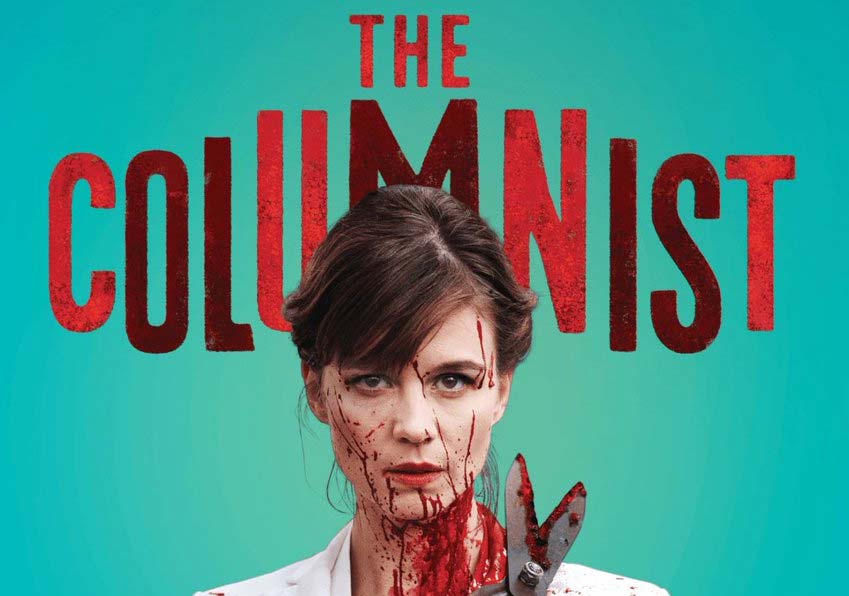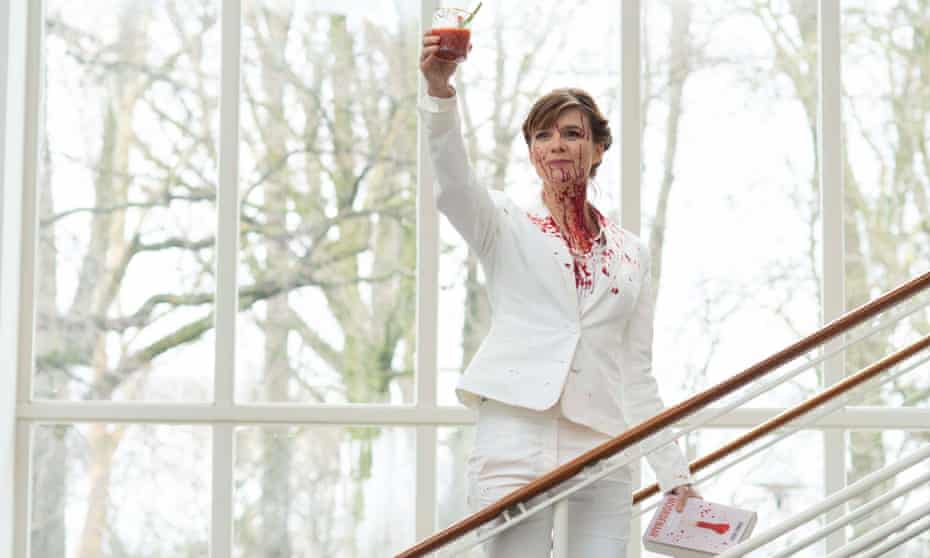Review – The Columnist

“Devilishly dark fantasy of one woman who has had enough”
The internet is an innate place for hate to breed. Opinions will be chewed and spit out by enraged profiles, therefore it was only about time a good old-fashioned revenge horror was made about it. The Columnist is a satirically dark horror film directed by Ivo van Aart and starring Katja Herbers (Westworld) and Bram van der Kelen. We follow Femke Boot (Herbers), a middle-class single parent tackling her critics in a rather unconventional way. As soon as The Columnist hit last year’s film festivals including Fantasia Festival and FrightFest, it became the latest ‘next best thing’, with positive reviews flooding in and it’s safe to say here at Dead Northern we are definitely in favour of van Aart’s instant classic.

The film blasts a modern motive. Most of us have experienced a bout of internet trolling, (albeit we do not release our frustration in the same way Femke does) through disagreeing with someone’s comments or being brave enough to put ourselves out there in the first place. The animosity behind keyboard warriors creates a thriving thrill for those who want to shame, and The Columnist takes great pride in enacting a devilishly dark fantasy of one woman who has had enough; Femke is our lead character, and the primary culprit behind the gruesome deaths plaguing anyone who dares to threaten her. The above-mentioned animosity is her greatest weapon as it enables her to carry on with her killing spree without the law following too close behind.
It’s this timely narrative that makes the film stand out on a wider level. Before we delve into the grisly details let’s take a quick moment to focus on the principal message at hand, unrepentant provokers. Throughout the film, Femke is brutalised for voicing her opinions, and despite a heated on-air discussion revolving around the harsh after-effects that come with trolls, the negative comments proceed to reign over every inch of humanity. Can we say that we are fully on her side? No, however, her vigilante persona does make for one hell of a wild ride into vengeance.
To play alongside Femke’s retaliation are a couple of subplots revolving around a budding romance and her daughter experiencing similar issues with speaking out at school, all in all making a multi-layered film that manages to tackle various interests without becoming too vague. Of course, besides the social commentary, this is a horror film, and blood, guts, and gore massively flourish. Within the short run time, we are treated to a plethora of delightfully savage kill scenes, with a personal favourite involving a rather vulnerable victim and a laptop… (It’s best left up to the imagination).

The performances fashion the film. We see Herber flawlessly portray a woman vexed by misogynistic roars. Throughout The Columnist, a para-dynamic shift in both character developments and pacing is made clear. Femke agonises over her feedback for a while before finally lashing out, this turning point only serves as an acceleration into madness. The deaths become more ruthless, she becomes clumsy in her discreteness and the threats only worsen. But do not be fooled, van Aart does not spend the whole runtime pouring our interests into her rage, our attention is also bound by Femke’s love interest, Steven Dood (van der Kelen) who I thought played the reverse role of an ‘angels advocate’ sat on the devil’s shoulder, shedding light into a dark situation.
As someone who spends a hefty amount of time online, I can slightly sympathise with Femke’s descent into obsession. We are on her side for the majority of the film, yet the last act pens the blame on the perpetrator. Is Femke just as wrong? Of course, there is little justification for her acts. Yet, the muted setting combined with the glory of chaos allows for a deeply transgressive narrative to shine at a time when it’s most needed.
The Columnist is available to watch via VOD right now!
This weeks article comes via Grace from Film Overload, you can check out more of her work here.












